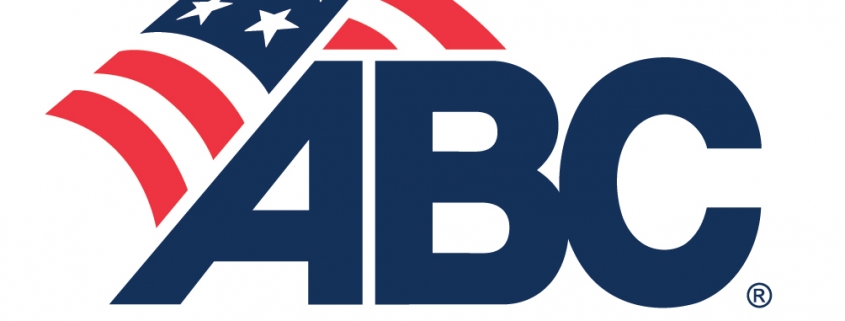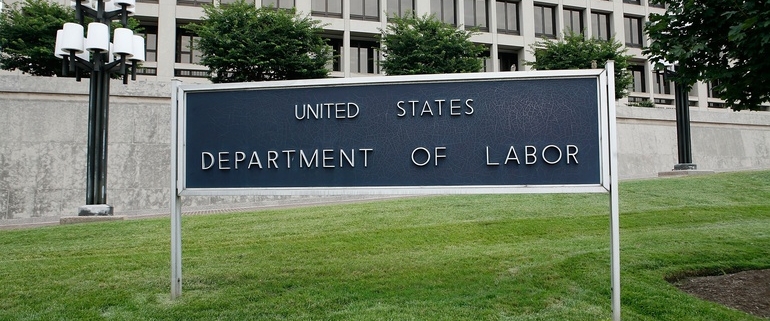Education & Workforce Development
Educators still too focused on traditional paths
In IBJ’s Thought Leadership roundtable, experts at Project Lead The Way, Associated Builders and Contractors of Indiana/Kentucky, CREA Foundation and Greater Education Opportunities Foundation, discuss the state of Indiana’s education system and how it must improve to prepare Hoosiers for the workforce.
Q: How would you grade the state’s educational system for the job it does preparing students to enter the workforce and excel in their chosen field?
Vince Bertram: There is too much focus on memorization and calculations and not enough being done to teach the application of subjects in schools and how they apply to the real world.
Despite the fact that nearly two million people graduate from college every year with STEM-related degrees, the U.S. still needs to import nearly 100,000 foreign workers to fill our needs in areas ranging from science to engineering. This means the U.S. education system simply doesn’t produce enough graduates with the skills employers need.
The surge of transformational technologies in recent years has forced companies to become less resistant to change. They must change if they want to survive, but to do that they must employ skilled workers. There’s mounting evidence that the skills needed by the emerging workforce to compete in this new economy aren’t necessarily the skills that most college graduates possess.
JR Gaylor: If a student’s chosen field requires a traditional four-year post-secondary degree, then our educational system prepares those students well. I’d give it an A. However, 65% of jobs will not require a bachelor’s degree. Currently, the share of Indiana’s labor force without a four-year degree is 70%. Educational systems need to adjust their focus to a much more balanced approach in preparing students for their next step instead of focusing their expectations, attention, and resources on attempting to prepare 100% of students for 35% of the job openings. Much work needs to be done for educational systems to make the appropriate investment in educational options other than earning a four-year bachelor’s degree. On that front, I’d give the state a C-.
Arvetta Jideonwo: Unfortunately, our educational system has some work to do when preparing students for post-secondary education and the workforce. This is particularly concerning for low-achieving students and those experiencing financial barriers to pursuing college.
According to the National Assessment of Educational Progresss (Nation’s Report Card, 2016), only about a third of U.S. high school seniors are prepared for college-level coursework in math and reading. And while the performance of the country’s highest achievers is increasing in reading, the lowest-achieving students are performing worse than ever.
Research shows that the lack of a stable home environment for students throughout their K-12 and post-secondary education experience has a great impact on their ability to persist, attain a credential, and ultimately become employed. There should be a greater focus on support and wraparound services for these students.
As one of the nation’s largest financial syndicators for low-income housing communities, CREA’s mission is focused on providing families with solutions to maintain a stable home environment. We believe there is a direct correlation between where a student resides and access to the best educational environment to ensure that they reach their highest potential.
Kevin Teasley: I would give the K-12 system in our state a C. High schools are too focused on providing a basic and traditional education for most students and meeting state accountability measures, which are limited in scope. While there are pockets of successful relationships between high schools and workforce, these opportunities are just that—pockets. Not systemwide, nor available to all.
Providence Cristo Rey High School in Indianapolis should be the norm, not the exception in Indiana. This terrific school has hundreds of partnerships with corporate Indianapolis. Its high school students gain valuable real-world experience.
Q: What is being done well in preparing people for careers?
JR Gaylor: From the private sector, there are two shining examples of assisting students in finding the best pipelines for careers. The Indiana Manufacturer’s Association’s INFAME program is worthy of note. INFAME (the Indiana Federation for Advanced Manufacturing Education) works with educational entities to establish and endorse programs and curricula that develop the skill set students need for manufacturing jobs. Another private sector initiative is the ABC Prep Academy, “From Junior to Journeyperson,” which gives high school students accelerated entry into a formal, four-year construction college.
Arvetta Jideonwo: The educational system is incorporating practical learning experiences for students, in particular in the STEM fields, to increase critical-thinking skills that are vital in the work environment. There are some excellent examples of these programs, such as Project Lead The Way, which creates an engaging, hands-on classroom environment and empowers students to develop the in-demand knowledge and skills they need to thrive. While the program does not reside in every school across the country, it has a large footprint in Indiana and is creating an excellent model for preparing students for the workforce.
Kevin Teasley: Providence Cristo Rey High School does an excellent job exposing students to future careers by placing them in real-world situations at area companies. 21st Century Charter School in Gary and GEO Next Generation High School Indianapolis focus on supporting students to do more than high school, too. These schools place students in real college and career certification classes while in high school so that students graduate from high school with experience and self-confidence, earn more than a high school diploma (college degrees and certifications or credits toward them), and are ready to continue and complete a college degree and/or get a high-paying job right out of high school.
Q: What are the biggest opportunities for improvement?
Arvetta Jideonwo: A consistent area for opportunity is the incorporation of career readiness skills and development into the K-12 environment. This is particularly true of high school, where internship and mentoring programs can be introduced. These programs not only provide students with vital critical-thinking skills, but they also enhance soft skills and decision-making processes through experience in a work environment. The Cristo Rey Network is the only network of high schools in the country that integrates four years of rigorous college preparatory academics with four years of professional work experience through the Corporate Work Study Program. Providence Cristo Rey in Indianapolis is consistently ranked as one of the top schools in its network, with over 90 Corporate Work Study partners. The school also has a full social services team that connects students and their families to resources in the community that can contribute to their success.
Kevin Teasley: GEO has been working since 2002 to meet student, workforce and societal needs by creating a sustainable school model that blurs the lines between K-12 schools, higher education and the workforce. Our schools have proven that it is possible for students in underserved communities to do much more than tradition suggests. In Gary, where the city had an annual dropout rate of 50%, our school regularly posts graduation rates greater than 90%. But more important than our graduation rate is the fact that our students earn associate degrees and career certifications while in high school—all at no additional cost to the taxpayer. Indiana can replicate this model and take it statewide. High schools, higher education institutions and employers need to come together to clearly define needs and then align educational pathways that support those needs and don’t duplicate efforts. GEO is working toward this goal.
Vince Bertram: We need to ensure our students can see what is possible, and they need to be exposed to career opportunities sooner. Having confidence in the classroom from an early age can significantly influence a student’s choice to pursue higher education when they are older. Exposing students to a wide range of career opportunities—and the knowledge and skills to pursue them—is critical to helping them make informed decisions about their futures.
Research shows that building self-confidence and self-esteem begins in early elementary grades. PLTW creates high-quality learning experiences accessible to more students, beginning in Pre-K, to give them the opportunity to engage in STEM.
The best way to increase STEM participation by students—especially those who are underrepresented in STEM, such as girls and minorities—is to start programs like PLTW early before children begin self-selecting out.
JR Gaylor: Expanding the initial successes of INFAME and the ABC Prep Academy to areas around the state could take proven models and provide immediate opportunities. These two programs are scalable, as more private-public educational partnerships can be added.
Q: What can employers do to help educators prepare students for careers?
Kevin Teasley: Employers need to reach out and engage high schools to share their workforce needs so that high schools can better connect what they are teaching to real world needs. Employers can help schools prioritize and update programs and can help show students future opportunities. Employers can also assist schools in creating real-world work situations and opportunities in the workplace. GEO is working to create work opportunities for our students who are already enrolled in college and/or career courses. These students are more than qualified to support employers in their needs.
Vince Bertram: Ultimately, we need our businesses to be better engaged. If you are waiting until college career fairs to connect with students, you’re too late.
We need businesses to support more holistic skill development—from technical skills to transportable skills, like problem solving, creative and critical thinking, collaboration, and communication. We must measure the skills that are most critical for career preparation, yet most academic tests still assess recall-level knowledge.
Business leaders can also provide real-world feedback on the curriculum students learn in the classroom. No one knows better what skills will make for industry success than those whose business success depends on qualified professionals in their workplace.
JR Gaylor: There is generally a chasm between the private sector and the educational systems. The private sector and schools speak a different language. They operate differently. To be fair, they both bear responsibility for not trying to bridge the chasm. There are too few opportunities to learn about each other. Each tries to fit the other’s way of doing things into their own expectations. Except for exemplary models, such as Area 31 Career Center in the Indianapolis area and the Prosser Career Education Center in New Albany, private sector engagement in Indiana’s public education career centers is lacking.
Arvetta Jideonwo: Employers can play a vital role in helping educators prepare students for careers through working collaboratively to identify proper skill sets for specific roles and by continuing to be flexible in work environments and job types. We learned during the pandemic that many companies could deploy a remote or hybrid work environment and still achieve their goals and objectives. We need to take this approach in recruiting talent, so that there are clear expectations. Also, investing in starting a college internship program can improve recruitment and retention efforts. Statistics show that internships can give college students a leg up when it comes to securing full-time employment after college. In fact, according to a report from the National Association of Colleges and Employers, 56 percent of 2019 college students who interned while pursuing a degree turned that experience into a full-time hire with the company. According to the report, the retention rate for interns hired is 71 percent after a year as compared to those who were hired without an internship or job experience. Their retention rate was only 42.4 percent.
Q: What should the state be doing to help prepare students for careers?
JR Gaylor: State leaders should be commended for establishing a new opportunity called Next Level Programs of Study. This program will provide a greater volume and quality of career and technical education courses that align to post-secondary certificate programs. In addition, state leaders have invested in the Next Level Jobs Initiative, which provides post-high school resources to individuals to better equip them with employability skills for high wage/high demand careers. Employers have access to training grants of up to $50,000 each as reimbursement for providing educational opportunities to their employees.
Kevin Teasley: The state is doing a great deal already, but more can be done. Accountability report cards matter to schools. Perhaps the best way the state can encourage schools to do more to prepare students for college and the workforce is by rewarding schools for going deep in these areas. The state already proved the power of accountability grades by measuring college and career readiness and rewarding schools that graduate students who took at least one Advanced Placement, International Baccalaureate, dual credit or career class. More than 68% of high school graduates achieve this today. But the bar is too low. Raise the bar and reward schools for graduating students with actual associate degrees and/or full career certifications in high-wage fields. This should not cost the state more, either. It requires a full review of where dollars are being spent, for what purpose and cutting duplicative expenses.
Q: How can educators address racial and income-based achievement gaps for students at the primary level?
JR Gaylor: Projecting a sense of hope that every student has a productive and fulfilling future. After establishing a sense of hope, the next step is to systematically connect the dots for the students so the students and parents see there is a viable and attainable path forward.
Arvetta Jideonwo: An unfortunate reality is that students of color and low-income students often do not matriculate at the same level in comparison to their counterparts. This is often a result of their community and access to proper education supports and wraparound services. According to the National Attainment Network, a low-income student is 29% less likely than a high-income student to enroll in post-secondary education directly after high school. Ultimately, only 35% of low-income high school students obtain a post-secondary credential by age 26. With the right support, low-income students and students of color succeed at similar rates to wealthier, majority-race students. A solution to close this gap is investment in support and wraparound services throughout K-12 to ensure that students reach their full potential by pursuing a post-secondary education pathway.
Kevin Teasley: We need to believe students can do much more than tradition suggests. Students have more capability than we give them credit for. We should also understand that the opportunities our students want may not be in our buildings. They may be at the college and/or career centers instead. Many people doubted our efforts to put 9th grade students in college courses, but these students are doing great. And their efforts are proving to their peers that they can do it. We are seeing a snowball effect in Gary, where we started with only one student taking a college course in high school. Today, nearly 90% graduate with a college degree or credit and/or career experience—22 points more than the state average.
Q: How can educators address racial and income-based gaps for high school and post-secondary students?
Arvetta Jideonwo: Educators can address these gaps by providing a strong system of support for this population of students, which is similar to the Cristo Rey Network model. Many students are dealing with family issues, food insecurity, housing, and other constraints outside of the classroom that inhibit them from completing their high school degree or post-secondary credential. At CREA, we believe housing is the first rung on the ladder to economic opportunity for many low-income individuals and families, and their access to the best schools and additional educational supports is intrinsically linked to their communities. CREA Foundation’s goal is to provide greater access to economic opportunity for students accessing post-secondary education, helping them earn a credential, and break the cycle of poverty, no matter their race, place, or socioeconomic status. CREA Foundation is focused on providing student scholarships and partnering with educational leaders that share its commitment to advance the education of academically promising students by investing in systems of support and wraparound services to ensure students are successful.
Kevin Teasley: We are creating strong partnerships between our schools in Gary and Indianapolis with Ivy Tech, Indiana University and Purdue University to support students in their college and career pathways. This includes scheduling, counseling, academic supports, transportation, covering the cost of tuition and textbooks, and providing the social and emotional supports necessary for students to succeed. You don’t learn to swim by jumping into the deep end of the pool. You start in the shallow end and then as you get stronger, you go further into the pool. We take the same approach to preparing students for college and careers. We start them in 9th grade, and as they grow stronger in their college and career classes, they take more classes. We support them every step of the way. After graduating from our high school, they know Ivy Tech, IU and Purdue and are better able to successfully navigate college and/or careers.
JR Gaylor: With more dynamic partnering of the education system with the private sector. The sooner the access to the employer community, the better. The disadvantaged student likely has not been made aware by family, school, or community of the array of great careers awaiting them. Understanding and participating early in meeting employers from the larger community through job shadowing, summer jobs, and internships is a practical way to address the gap. This also requires educators to have developed a greater awareness of companies and industries and how they function and operate. To excite and connect students to employers, educators need to have relationships with the job creators in their sphere and must be able to articulate to students specifically what a job entails.
Q: Does our education system spend enough time making students aware of apprenticeships and certificate programs, or is the system too focused on traditional four-year post-secondary degrees?
Kevin Teasley: There are new initiatives underway right now to improve apprenticeships for high school students, and these show great promise. Ascend Indiana is doing a great job piloting an apprenticeship program with Indianapolis schools. More should be done to support Ascend’s efforts, and the effort needs to be supported statewide.
Vince Bertram: State accountability has shifted to place a greater emphasis on workplace certification and I believe this trend will continue. It’s also important for employers to reconsider educational requirements for employment. For instance, many employers have begun to question whether the four-year degree signifies someone who is ready for the challenges of the new economy. Alternatives to four-year degrees have continued to expand to offer students a more focused and specialized education.
In education, we must continually update our academic programs to reflect the unique challenges of the new economy. Skills matter.
JR Gaylor: As I mentioned before, the educational system generally still sees itself as preparing students for attaining the traditional Plan A: a four-year college degree. That is the formal and informal message students receive from all aspects of the educational system. Therefore, if a student does not envision himself or herself succeeding on that path, they tend to disengage. Progress is being made in some circles of educational leadership to understand that EMPLOYMENT in a career be the overriding goal. A cultural shift must occur among educators and parents for everyone to understand that employment prep, not college prep, should be the primary goal.
Arvetta Jideonwo: In my opinion, the system is focused on the attainment of four-year post-secondary degrees. I believe we have an opportunity to provide more exposure to two-year degree tracks and non-traditional education credentials to cater to the diverse skill sets of individual students. Ivy Tech Community College does an excellent job of exposing students to real-world experiences and non-traditional tracks.
Q: If you could do only one thing to help improve our educational system, what would it be?
Vince Bertram: Make learning relevant. We must focus on providing access to transformative learning experiences for all students and make clear the connection between learning and the opportunities it will create when they leave the classroom.
This is tied to the idea of a growth mindset and career learning. For example, how do we connect students and make learning in the third grade relevant to a career? We have to help students understand that what they’re learning today does matter—not just for the next test, but for the lifelong pursuit of an enduring career.
If students haven’t developed key skills over time, then we have dramatically limited their access to some of the most prosperous careers in our economy.
JR Gaylor: The Indiana Commission for Higher Education was established to define the educational missions of public colleges and universities and plan and coordinate Indiana’s state supported system of post-high school education. It works closely with the Department of Workforce Development and the Department of Education. Because of CHE’s charter, it focuses almost entirely on the traditional Plan A post-secondary, four-year degree college system. The CHE serves well those 30-35% of our students who succeed in that pathway and corresponding institutions.
A game changer for Indiana would be to create a parallel commission that would serve the interests of the 65-70% of our students who choose other options in career and technical education (CTE). This new commission could bring the same focus, oversight, credibility and authority to a coordinated statewide CTE mission that CHE does for the four-year traditional college system.
Arvetta Jideonwo: In Indiana, we have a multitude of school networks, private and public schools, charter schools, higher education institutions, non-profit organizations and funders that could work collaboratively to address the educational system gaps that are unfortunately leaving low-income students, students of color, and other students from marginalized communities behind. A comprehensive approach to address needs from a K-16 perspective with involvement from the public and private sectors could create a system of support to ensure Indiana students are reaching their highest potential. A collaborative approach to addressing this issue could reduce potential barriers to continued persistence through high school to post-secondary and earning
a credential.
Kevin Teasley: GEO encourages legislators to give qualified high school students and their schools access to the state’s 21st Century Scholars funding, which is typically available for paying college tuition only after high school. This will remove financial challenges related to taking college courses before high school graduation and will encourage high schools to further partner with higher education institutions. Students can receive academic and social and emotional supports from their high schools while learning to navigate real college and career opportunities. It will increase results regarding college completion rates among 21st Century Scholars and it will serve to encourage others in high school to engage in college and career pursuits.








